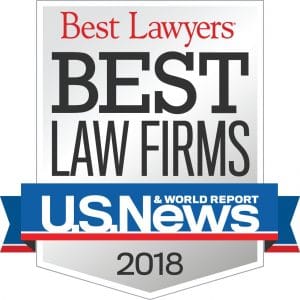At Rush & Gransee, we understand the complexities and challenges individuals face when pursuing compensation for slip and fall accidents. Slip and fall incidents can happen anywhere, from grocery stores and shopping malls to sidewalks and private properties. While these accidents may seem trivial at first glance, the injuries they cause can be severe and life-altering.
From proving liability to demonstrating damages, there are crucial elements that must be addressed to build a strong slip and fall case. Whether you’re a victim seeking justice or simply seeking to understand your rights, this comprehensive guide will provide valuable insights into the legal process surrounding slip and fall accidents.






What is a Slip and Fall Accident?
A slip and fall accident occurs when an individual slips, trips, or falls on another person’s property due to hazardous conditions or negligence. Slip and fall accidents are typically categorized under premises liability law, which holds property owners and occupiers accountable for maintaining safe conditions on their premises.
Common Slip and Fall Scenarios
Wet or slippery floors are a major risk factor for such accidents. Spills, leaks, or freshly mopped surfaces in grocery stores, restaurants, and other public venues can quickly become hazardous, leading to falls.
Sidewalks that are uneven or cracked due to neglected maintenance can create tripping hazards. This is often seen in residential neighborhoods and business districts, where the irregularities in the pavement can catch someone off guard.
Walkways cluttered with debris, cords, or merchandise can also be dangerous. In retail stores, offices, or warehouses, these obstacles can obstruct paths and cause individuals to trip and fall.
Poor lighting compounds these risks, making it harder to see potential hazards. Parking lots, stairwells, and hallways that are inadequately lit, especially during the night or bad weather, are common sites for slip and fall accidents.
Lastly, defective stairs or handrails are significant safety hazards. In residential buildings, hotels, or public facilities, broken steps, loose handrails, or missing guardrails can lead to dangerous falls.
Common Injuries in Slip and Fall Accidents
Slip and fall accidents can result in a wide range of injuries, varying in severity depending on factors such as the height of the fall, the surface landed on, and the age and health of the victim. Some common injuries sustained in slip and fall accidents include:
Fractures and broken bones: Falls can cause fractures or breaks in the wrists, arms, hips, ankles, or legs, particularly among older adults.
Head injuries: Traumatic brain injuries (TBIs), concussions, and skull fractures may occur if the victim’s head strikes the ground or another object during the fall.
Spinal cord injuries: Falls can lead to damage to the spinal cord, resulting in paralysis, loss of sensation, or impaired mobility.
Soft tissue injuries: Sprains, strains, and bruises to muscles, ligaments, and tendons are common in slip and fall accidents, causing pain and limited mobility.
Cuts and lacerations: Broken glass, sharp edges, or protruding objects on the ground can cause cuts and abrasions, increasing the risk of infection.
Slip and fall accidents can have devastating consequences for victims and their families, often resulting in physical, emotional, and financial hardships. By understanding the definition of slip and fall accidents, common scenarios in which they occur, and the injuries commonly sustained, individuals can take proactive measures to protect themselves and seek legal recourse if they are injured due to negligence or hazardous conditions on another person’s property.
Winning a Slip and Fall Case
Pursuing a successful slip and fall case requires careful attention to legal principles and evidence.
Essential Elements of a Slip and Fall Case
To establish liability and secure compensation in a slip and fall personal injury lawsuit, certain foundational elements must be proven. Firstly, the property owner or occupier is responsible for maintaining a reasonably safe environment, thereby upholding a duty of care toward visitors. Secondly, if this duty is breached—either by failing to correct hazardous conditions or by not warning visitors of potential dangers—the property owner or occupier can be held liable. Thirdly, the accident and any resulting injuries must be directly caused by the hazardous condition. Lastly, the victim must have incurred damages, which could include medical expenses, lost wages, pain and suffering, and other related losses. These elements collectively form the basis of a slip and fall case, determining both the presence of negligence and the extent of any compensation awarded.
Specific Aspects to Prove in a Slip and Fall Case
In a slip and fall case, several key elements must be convincingly demonstrated to establish liability. First and foremost, there must be evidence of a hazardous condition on the property at the time of the incident. Such conditions could range from wet floors and uneven surfaces to poor lighting and obstacles in pathways.
Furthermore, it is essential to prove that the property owner or manager was aware—or should have been reasonably aware—of this danger yet neglected to take appropriate measures to rectify it or to warn those at risk.
The concept of foreseeability also plays a crucial role; it must be shown that a prudent property owner would have foreseen the potential for harm, recognizing the risk posed to visitors.
Additionally, establishing notice is pivotal. This might be demonstrated by showing that previous complaints were made about the hazardous situation, that similar incidents had occurred before, or that the property owner failed to adhere to standard safety procedures.
In Texas, the doctrine of comparative negligence may also influence the outcome. If the victim’s actions contributed to the accident, their compensation could be proportionally reduced based on their share of fault. Nonetheless, it must be clear that the negligence of the property owner was a predominant factor in causing the incident.
Gathering Evidence and Building a Strong Case
To prevail in a slip and fall case, thorough documentation and evidence collection are essential. This may include:
– Photographs or videos of the accident scene, including the hazardous condition and any warning signs.
– Witness statements corroborating the circumstances of the accident.
– Medical records documenting injuries sustained in the fall and subsequent treatment.
– Maintenance records or inspection reports indicating whether the property owner was aware of the hazardous condition.
What Damages may be Awarded in a Slip and Fall Case?
When individuals suffer injuries in slip and fall accidents due to the negligence of property owners or occupiers, they may be entitled to compensation for their damages. In Texas, slip and fall victims have the right to pursue various types of damages to cover their medical expenses, lost wages, pain and suffering, and other losses incurred as a result of the accident.
Compensatory damages aim to compensate the injured party for their losses and expenses resulting from the slip and fall accident. These damages can be divided into two main categories: economic and non-economic.
Economic Damages
Economic damages encompass several key areas, including medical expenses, lost wages, and property damage. Medical expenses cover a range of costs such as hospital stays, surgical procedures, consultations with doctors, prescribed medications, physical therapy, and any other essential medical treatments needed due to the accident. Lost wages account for the income victims lose when they miss work, experience a diminished earning capacity, or find themselves unable to resume their job post-accident. Property damage refers to personal items like clothing and electronic devices that may have been damaged during the incident, with victims having the right to claim costs for repairs or replacements.
Non-Economic Damages
In slip and fall accidents, victims may receive compensation for non-economic damages, which address the less tangible consequences of their injuries. This includes compensation for pain and suffering, covering not only physical discomfort but also emotional distress and psychological trauma that stem from the incident. Additionally, if the accident leads to a decreased ability to engage in activities or hobbies that were once a source of joy, victims may be entitled to damages for the loss of enjoyment of life. Furthermore, significant injuries can disrupt relationships with family members or spouses. In such cases, damages may also be awarded for loss of consortium, which compensates for diminished companionship, affection, and support.
Calculating Damages
Calculating the value of damages in slip and fall cases involves a nuanced process that often necessitates the experience of seasoned personal injury attorneys and medical professionals. The determination of damages hinges on several key factors. Firstly, the severity of the injuries sustained by the victim is a critical component, encompassing the scope and permanence of these injuries, as well as the costs related to medical treatments and rehabilitation. This evaluation forms the basis for both economic and non-economic damages.
Additionally, the victim’s future medical requirements, such as further surgeries, ongoing therapy, or medications, are crucial in estimating the damages due to future medical expenses. Another significant aspect is the impact of the injuries on the victim’s ability to earn. If injuries lead to a long-term disability or hinder the victim’s return to their prior occupation, compensation may be provided for the loss of future earning capacity.
Furthermore, in Texas, the concept of comparative negligence plays a vital role. Under this rule, the compensation that a victim receives can be adjusted based on their share of fault in the incident. If the victim is partially at fault, their compensation is proportionally reduced, reflecting their degree of responsibility in the accident. This layered approach ensures a fair assessment of damages, taking into account various personal and legal considerations.
Getting You the Compensation You Deserve
Winning a slip and fall case requires careful attention to detail, thorough documentation of evidence, and a deep understanding of the legal principles governing personal injury law. From proving the existence of a hazardous condition to establishing the property owner’s negligence and the extent of the victim’s damages, each step in the process is crucial to achieving a successful outcome.
At Rush & Gransee, we have extensive experience representing slip and fall accident victims in Texas and helping them recover the compensation they deserve for their injuries and losses. If you or a loved one has been injured in a slip and fall accident, don’t navigate the legal process alone. Our dedicated team of personal injury attorneys is here to provide the guidance, support, and advocacy you need to pursue justice.
Contact us today for a free consultation to discuss your case and explore your legal options. Let us fight for your rights and hold negligent property owners accountable for their actions. Your recovery starts today.


